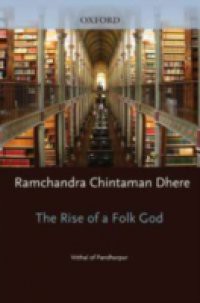Vitthal, also called Vithoba, is the most popular Hindu god in the western Indian state of Maharashtra, and the best-known god of that region outside India. His temple at Pandharpur is the goal of an annual pilgrimage that is one of the largest and most elaborate in the world. This book is the foremost study of the history of Vitthal, his worship, and his worshippers. First published in Marathi in 1984, the book remains the most thorough and insightful work on Vitthal and his cult in any language, and provides an exemplary model for understanding the history and morphology of lived Hinduism. The author, Ramchandra Chintaman Dhere, is the leading scholar of religious traditions in Maharashtra and throughout the Deccan, the plateau that covers most of central India. Vitthal exemplifies the synthesis of Vaishnava and Shaiva elements that not only typifies Maharashtrian Hindu religious life but also marks Vitthals resemblance to another prominent South Indian god, Venkatesh of Tirupati in Andhra Pradesh. Dheres analysis highlights Vitthals connection with pastoralist hero cults, and demonstrates the gods development from a god of shepherds to a god of the majority of the population. In addition, Dhere also explores the connections of Vitthal with Buddhist and Jain traditions. In the books final chapter, Dhere presents a culminating stage in the evolution of the worship of Vitthal: the interpretation in spiritual terms of the god, his temple, the town of Pandharpur, and the river that flows past the town. Dhere received Indias highest literary award, the Sahitya Akademi prize, for this book.

